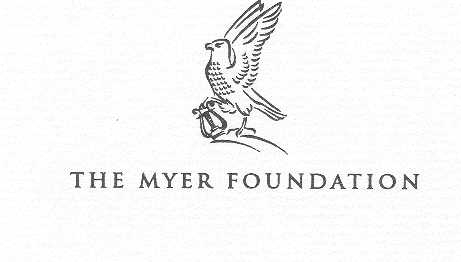 A short history of Merri Creek Management Committee
A short history of Merri Creek Management Committee
Merri Creek runs from the Great Dividing Range south through basalt plains used for grazing and quarrying into the northern suburbs of Melbourne Australia.
In the 1970's a range of local community groups interested in open space and conservation issuesformed along Merri Creek. One of the groups, the Brunswick Merri Creek Action Group was formed in May 1976. Its main concern was developing parkland along the Merri Creek in Brunswick, but it was also part of local community opposition to the F2 freeway, proposed along the entire urban length of the Merri Creek valley.
A series of disasters involving massive mortality or recently planted trees caused by poor horticultural knowledge or lack of co-ordination (e.g. mowing or spraying trees) coupled with a strong desire to preserve the natural areas for passive recreation led to calls for the formation of a regional group for coordination along the Creek.
Correspondence from the Brunswick Merri Creek Action Group resulted in the then Fitzroy Council calling a meeting with the other councils and community in October 1976 which resolved to form the Merri Creek Co-ordinating Committee (MCCC). The MCCC was duly established in December 1976. Its membership was 8 municipal councils and more than 20 community groups, with some State Government departments as observers. The Co-ordinating Committee had a very clear vision and objectives, but faced at times strong criticism from entrenched interests.
The Merri Creek Action Group played a major role in getting the Coordinating Committee member Councils to apply for funding for revegetation and parkland development projects. The Group's first planting in Brunswick was in 1977 between Moreland Road and the Brunswick Velodrome. Council practices were different then. No weeding was done before or after the planting and as one member of the Action Group said, "We just marched in and dug a hole and planted the plants." Unfortunately, any protecting stakes were removed by kids or for use as fire wood, and the small tube-stock plants were mown over.
One area around Clara Street, Brunswick was so filled with garbage so that, as another member said, "You'd go to dig a hole with a mattock or whatever and you'd put it through eight sheets of rusting iron." At the time, the Merri was neglected. It was seen by some as a wastedump, a sewer, or a freeway route. It was weedy with lots of rubbish and it was very common to see the dumped remains of animals that had been slaughtered in backyards. There had been a progression towards using indigenous plants, so that by the time the MCCC was formed, there was agreement that only indigenous plants would be planted along the Creek. The MCCC had no works team, so community groups such as the Brunswick Merri Creek Action Group did the planting. However, because of the poor survival rate due to lack of maintenance, or mowing or spraying the plants, it soon became obvious that a properly trained skilled workforce was required to make some real progress.
Members of the Brunswick Merri Creek Action Group saw the Merri Creek as "a damaged asset that just cried out to be restored, not only for people but also for birds and animals". Arange of other community groups were interested in the Creek also. The various Creek groups had a broad range of interests including planning issues (such as freeways and powerlines), revegetation, restoration, recreation, heritage, and flood management, and all the issues were interrelated.
The need for a pathway along the Creek became a key issue as people needed to have access to the potential recreation area along the Creek, in order to build support for its protection and restoration. The Merri Path was one of the greatest achievements of the MCCC. It involved obtaining funding for coordinated design and construction across eight municipalities. Another big effort by MCCC was put into acquiring large areas of private creek frontage for public ownership, through negotiation, donation or purchase.
A further achievement was at Merri Park Northcote, where the then Melbourne and Metropolitan Board of Works (MMBW) proposed a three metre high concrete floodwall right beside the Creek for several hundred metres, with the land behind the wall (owned by the Board) to be sold off for development. MCCC deputations to State Government Ministers and to Northcote Council resulted in the construction of an earthen levee for flood control, and creation of the parklands adjacent to Winifred Street that are appreciated today.
The lack of specialist staff who could commit time to the restoration of the Merri Creek, and the limits on the energy the community could put in led to MCCC establishing a Steering Committee to determine what the best management arrangements for the Creek would be.
In June 1988 Ernst & Whinney Services were commissioned by the Co-ordinating Committee to undertake a management study of the Merri Creek. It found that organisational management of the Merri Creek was characterised by:
- limited co-ordination between Councils, the MMBW and the community with respect to creek planning, development and maintenance issues.
- Inadequate mechanisms and resources for achievement of improved Creek management
- A lack of guidelines for improved protection and development of the Merri Creek.
The study also found that the technical management for the Merri Creek was characterised by
- Low priority to and understanding of sound land management practices within most municipalities
- Lack of resources for a proper level and quality of technical input into management of the Merri Creek.
The final report recommended a new approach to management of the Merri Creek Parklands designed to achieve a more sensitive and cost-effective approach to creek management, using limited resources on an efficient, effective and equitable basis. Key components of the new approach were:
- formation of a new co-ordinating body, the Merri Creek Management Committee Inc. with membership drawn from the Community, Local Councils, the MMBW and the State Government,
- Appointment of a full-time Manager to oversee the implementation of creek planning controls, a creek development plan and training courses for Parks and Gardens personnel,
- Formation of a dedicated works crew to deliver high quality, specialised parkland development services in the Merri Creek Parklands
- Funding for the new management arrangements to be shared between the Victorian Government/MMBW and local councils, on a proposed 50:50 basis, to be of the order of $320,000-$350,000 (total) in the first year.
Ernst & Whinney recommended that in terms of policy development and planning:
- member Councils and the MMBW would look to the MCMC as a major body for policy development with respect to the Merri Creek Parklands
- Member Councils and the MMBW would look to the MCMC as the prime source of reference with respect to development proposals within the Merri Creek Parkland
- MMBW and member councils would pass relevant development proposals and planning applications to the MCMC for review, and after the implementation of planning controls, agreement.
The report concluded that its recommendations had been developed in close consultation with the Merri Creek Co-ordinating Committee, relevant community groups, local councils and the MMBW, and that they were based on realistic and equitable organisational, technical and funding commitments from relevant parties. Properly implemented they would provide a sound working model for waterway management.
The MCCC resolved to establish the Merri Creek Management Committee (MCMC), and in the light of the report planned what MCMC ought to do.
Merri Creek Management Committee Inc (MCMC) was incorporated in March 1989. Initially it had 8 directors, one from each of its member Councils, one from Melbourne Water (as the MMBW had then become), one from the Department of Conservation and Natural Resources, and 6 from Friends of Merri Creek which was formed simultaneously from the various community groups which had been involved in the MCCC. A Manager, a Revegetation Team Supervisor, and a Revegetation Team of 4 were appointed in 1989.
The Manager was initially based at the Preston Town Hall, and the Revegetation Team at a rented factory in Preston. In October 2002 there were 18 staff on the payroll, based in a dedicated office rented from Moreland City Council next to CERES and near to the Creek in Brunswick East.
Significant changes over the last 11 years include:
- Amalgamations of Councils leading to 5 rather than 8 councils, and a corresponding change from one representative each to two.
- Declining commitment to direct funding from State Government (initially Melbourne Water was contributing $85,000 per year, and DNRE $75,000 per year)
- Resignation of DNRE in approx 1995 due to lack of resources
- Changes to the Statement of Purposes to clarify MCMC's interest in the whole catchment (and adjacent catchments) not just the Merri Creek Parklands.
- Competitive tendering; MCMC (which has always had resource sharing as a stated purpose) successfully tendering for contracts, particularly with member Councils
- Resignation of Melbourne Water in 2001
- Turnover doubling from $423,188 in 1989-90 to $1,129,218 in 1999-2000 then declining to $892,667 in 2003-4.
- MCMC ran a huge Jobskills Program between 1995 and 1998, and employed over 100 staff under the program for 6 months each.
- Publication of the Merri Creek and Environs Strategy in 1999.
- Establishment of an environmental significance overlay along the Creek across the 5 municipalities.
- Establishment of the Merri Creek Environment Fund as a tax -deductible gift fund in 2000.
In 1996 Melbourne Water gathered the government stakeholders together to examine the most appropriate structures to coordinate management of Melbourne's 4 northern waterways. The report of this Northern Waterways Review endorsed the local waterway coordination body model that MCMC pioneered.
In 2001 MCMC commenced a major review of its operations. Representatives from a wide range of stakeholder groups and staff were asked to identify and review issues regarding MCMC's current position and future directions in 4 broad organisational areas: MCMC's primary purpose, its rules and membership, its structure and operational issues, and its stakeholder relationships and future directions. Whilst there was strong support for MCMC's work, a number of very important issues were raised which are gradually being worked through. The report of the workshops made the following recommendations:
- Review Primary Purposes to ensure relevance and currency (underway)
- Determine direction, focus and priorities and document in a three-year Strategic Plan
- Address the relationship between membership and revenue
- Review member participation
- Review and Simplify Membership Structure and Rules
- Stakeholder Communication and Management Strategy implemented
- Determine direction, focus and priorities and document in a three-year Strategic Plan
- MCMC Structure be reviewed in the context of strategic directions
Over the last 25 years a large number of reports about the Merri Creek and its management have been prepared. These reports are described in the resources page, and a number of them are available on-line.
Thanks to Ann and Bruce McGregor for early information about the Creek.





 Merri Creek Management Committee. 2 Lee St, East Brunswick, Victoria, Australia 3057
Merri Creek Management Committee. 2 Lee St, East Brunswick, Victoria, Australia 3057